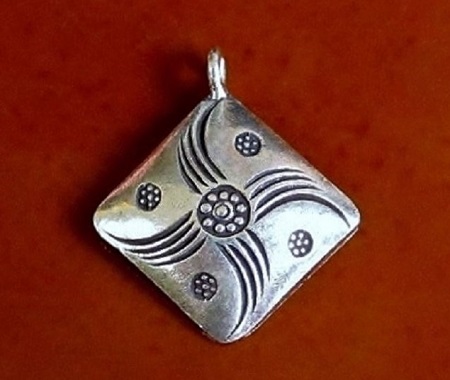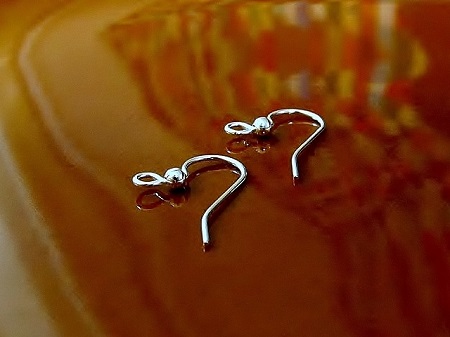Sterling Silver versus fine silver
In general when speaking about sterling silver it means that pure silver is mixed with copper in a ratio of 92,5 % to 7,5 %. It is the other metal that hardens silver and makes it easier to work with. Over time and in contact with air and/or skin, sterling silver will tarnish but can be easily polished. Some very sensitive people may have allergic reactions to it and it is not advised to wear silver objects when taking antibiotics.
Fine silver on the other hand is 99,9 % silver and is purer than sterling. As a consequence it is softer and does not oxidize or tarnish. It is a favorite of the Hill tribe and many a jewelry designer loves it.

Silver-plated versus silver-filled
Silver-plating happens through electroplating. This is a procedure that fuses a thin layer or film of precious metal on a base metal core. The silver layer is somewhere between 0,5 and 8 microns and will tarnish over time. As a consequence when polishing one needs to be careful not to wear off the silver. In general a micron allows a year of regular use.
Metalizing is similar to metal plating, but in that case metal is applied to a non metal core.
For what is up to silver-filled items, a thick layer is bonded to a base metal core in the same way as with silver-plating. As a consequence nothing is filled. There are no jewelry standards concerning the thickness of the layer, but in general the silver-filled item is made of 1/10th sterling and may be handled in the same way as a sterling silver object.

Be aware of terms.
When speaking of German silver, alpaca or nickel silver, there is no silver involved. It is a combination of nickel, zinc and copper - usally predominantly copper.
Enjoy shopping @ https://dunebeads.com/en/metal-jewelry-findings !



